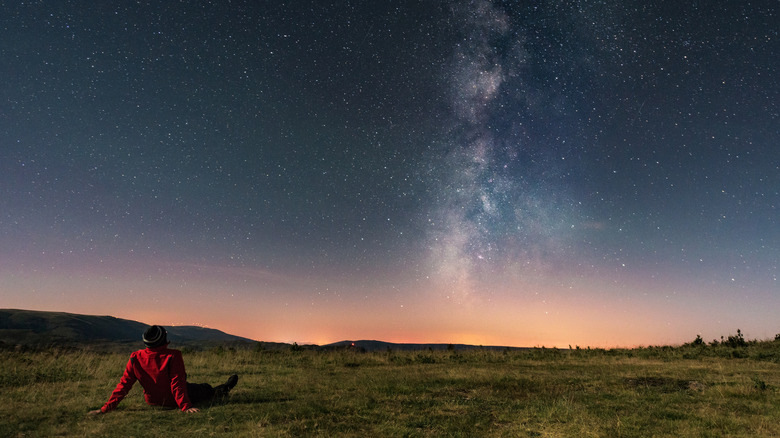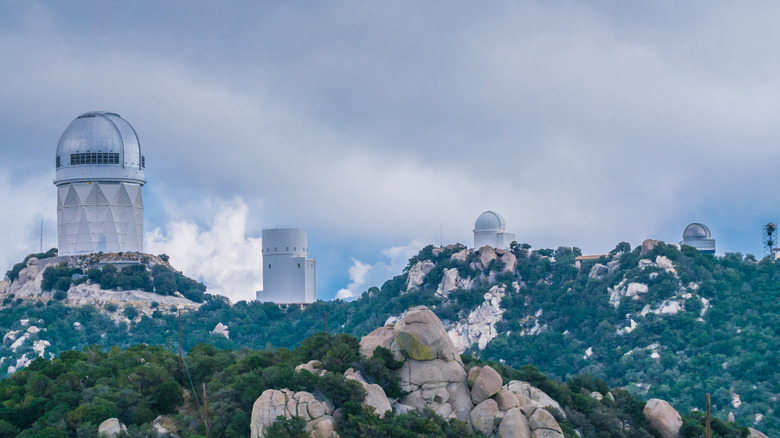One Of The World's Best Stargazing Destinations Thrives In Western America With Astronomical Attractions
Stargazers love finding spots with clear skies and low light pollution where the night sky comes alive. There's nothing quite like seeing a bright nebula, Saturn's delicate rings, or the stellar white smudge that is our Milky Way. While it's difficult to beat Finland's glass igloo resort for viewing the northern lights, Tucson's Astro Trail, comprising of a dozen stargazing destinations, including observatories, research centers, planetariums, and space centers, most of them under an hour away, offers some of the best stargazing opportunities in the world. The city's long history of light pollution-limiting ordinances makes it a one-of-a-kind urban area with an array of stargazing spots in close proximity. The broader Southern Arizona landscape, with its desert climate and jagged terrain, offers particularly good viewing conditions, and Tucson, located at a higher altitude than the state's other arid areas, is consequently the best of the best for stargazing.
The Astro Trail is a self-guided tour that you can embark on at your pace, which is a good thing considering how vast some of the sites are. The national parks aside, even the Pima Air & Space Museum, one of the trail's stops, is spread over a whopping 80 acres. The trail map is free and features local restaurants and shops along the way. Since the sites are spread all around Tucson, it's best to use the city as a base and plan your stargazing excursions accordingly. Plus, it also happens to be a UNESCO City of Culinary Excellence with an astounding array of restaurants and breweries.
What to know about Tucson's self-guided Astro Trail
The Astro Trail map can be downloaded from the Tucson tourism website and presents 12 destinations, which are best divided into daytime and nighttime visits. Most of the daytime destinations — museums, laboratories, and a planetarium — are conveniently located on the University of Arizona campus within the city. The Richard F. Caris Mirror Lab is where some of the world's most advanced giant telescope mirrors are made, looming up to three stories in diameter. Meanwhile the Steward Observatory, a 100-year-old institution, is involved in cutting-edge stargazing projects like the development of the Giant Magellan Telescope. Nearby is the Flandrau Science Center & Planetarium, where you can brush up on star knowledge and watch constellations during the day before heading out at night to see the real deal in the sky. About 10 miles from the planetarium is the Pima Air & Space Museum. Aviation fans can spend hours exploring the over 400 aircraft the museum holds.
If you've enjoyed visiting America's iconic stargazing national parks like California's Joshua Tree or Big Bend in Texas, you'll be spoiled for choice in Tucson. A mere 15 miles from the city lies Saguaro National Park, offering panoramic views of celestial bodies amidst the Sonoran Desert's surreal landscape. The Oracle and Kartchner Caverns State Parks are also both under an hour's drive from Tucson, with the latter being a designated Dark Sky Park for its high-quality night sky views. Finally, to get up close to the stars, head to any of the four observatories located just outside Tucson — The Fred Lawrence Whipple Observatory (FLWO), Kitt Peak National Observatory, Mount Graham International Observatory, and the Mt. Lemmon SkyCenter.

